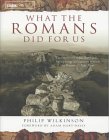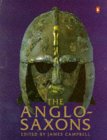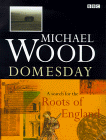Origins of the name Leeds
The Celtic British tribe called the Brigantes were also known as Leods or Ludees. A possible starting point for:
Loidis Ledes Leedes then Leeds. Natives of Leeds are known as Loiners
Viking, Roman and Saxon Eras






The Norman Conquest & Era
1066
- In this very eventful year, Leeds was a village, based on farming and centred around Leeds Bridge to the Church (Now Leeds Parish Church also called Leeds Minster. The main roads being "Bridge Gate" (Briggate), Burgh Lane (Boar Lane) where the manor house was situated, and Kirk Gate (Kirgate) leading to the church.
- King Edward the Confessor of England dies in January 1066 without a direct heir. The 3 contenters for the throne Harold King of England, Harald Hardrada King of Norway, and William Duke of Norway all claim the throne and battle it out duting the year.
- Vikings invade the North of England . King Harold Godwinson marches north with his army and defeats the vikings under King Harald Hardrada on 25 September 1066 at Stanford Bridge in Yorkshire.
- On the 28 September 1066 the Norman invasion army lead by William the Duke of Normandy lands at Pevensey on the South Coast in Sussex
- Harold and some of his army march South & is defeated by William at the Battle of Hastings on 14 October 1066.





The start of the Norman era. The buiding of originally wooded motte and baily castles, later replaced by magnificent stone castles with there typical square stone keeps. Built to impress & subdue & dominate the Saxons, abd basically saying the Normans are here to stay and to rule.
Many french words were introduced into the English language. Many of these words were in the food and cooking deptment.
William II 1087 1100


1086
Doomsday Book recorded a settlement supporting 35 farming families, a priest, church, mill and several surrounding hamlets. The main area being around the parish church.
The Domesday Book
The Domesday Book was described by David Hume as “the most valuable piece of antiquity possessed by any nation”. Compiled in an astonishing eight months the book was a complete audit of England in 1086 and it confirmed the redistribution of lands and property to the Norman friends of William
The conquest of England, by the Normans vitually finished the Kingdom of Elmet 1089. an area around Leeds. One of the small towns near Leeds is still called Barwick in Elmet.
Leeds Castle thought to be a fortified manor house known as a burh built in Mill Hill. The lane leading to the burgh from the village was Burh Lane (Boar Lane). There are no plans or trace of the castle. In 1341 a report talks about the site of a manor house with a moat.
1086
Doomsday Book recorded a settlement supporting 35 farming families, a priest, church, mill and several surrounding hamlets. The main area being around the parish church.
1100 - 35 Henry I
Stephen 1135 54
Matilda 1141


Stephen and Matilda: The Civil War of 1139 53 (History) 075090612X
1139
King Stephen lays siege to Leeds Castle, in Kent
1152
The building of Kirkstall Abbey was started
House of Plantagenet Angevin
Henry II 1154 89
The Angevin Empire stretched from the Scottish border to the Pyrenees. It was ruled by a succession of princes Henry II, Richard I and John who could claim to be the most powerful rulers in Western Europe.


Richard I the Lionheart 1189 99


John 1199 1216
Born 24 December 1166. Died at Newark Castle 19 October 1216

![1215: The Year of Magna Carta [AUDIOBOOK]](../books/1840327936.02.TZZZZZZZ.jpg)



King John was best known for:
- Signing The Magna Carta at Runnymedewhich he quickly went against its provisions.
- The monarch who reighned, according to Holliwood, during the legend of Robin Hood There is no historic evidence to prove one way or the other if the ledgend was true or false.
- Actual historicsimilar to Robin Hood inclued: Robinhood, Robehod, Robbehod or Rabunhod
- There was a Robin born in Lockersley, South Yorkshire probably modern day Loxley) in 1322
- A robin Hood was also conected to Little John at Whitby, North Yorshire, who had an archert contest.
- Robin Hood is also conected to Robin Hoods Bay, Yorkshire.
- Lost Normandy to the French
- Built the core of Dublin Castle
- Lost the Crown Jewels in the East Anglian Fen mud
1207
The centre of LEEDS moves from Kirkgate to north of the river crossing, now Briggate
History Pages Menu
Monarchs Early - 1216
Edward the Confessor Harold II. William I (the Conqueror). William II . Henry I . Stephen. Matilda. Henry II. Richard I the Lionheart. John
Major Events
Viking, Roman and Saxon Eras
Battle of Stanford Bridge 1066
Battle of Hastings 1066
Magna Carta 1215.
Monarchs 1216 - 1471
Henry III. Edward I. II. III. Richard II. Henry IV. V. VI
Monarchs
House Of York
Edward IV. V. Richard III.
House Of Tudor
Henry VII. VIII. Edward VI. Lady Jane Grey. Mary I. Elizabeth I the Virgin Queen.
House of Stuart
House of Orange
William III of Orange
House of Hanover
George I, George II, George III, George IV, William IV, Victoria
House of Saxe-Coburg-Gotha
Edward VII
House of Winsor (Change of Name from German to British
George V, Edward VIII Abdicated to marry Wallis Simpson. George VI, Elizabeth II
Major Events
The Armarda 1588. & the Golden Years
Oliver Cromwell Lord Protector. Richard Cromwell. Charles II. Mary II. William III. Anne. George I
The republic
George II. III. IV. William IV
Victoria
Crimean War 1854 56. Boer War 1899 - 1902
Edward VII. George V. Edward VIII
1stWorld War 1914-1918
George VI
2ndWorld War 1939 - 1945
Falklands War 1982.
Gulf War on January 9 1996.
Gulf War II week one March 19. 2003.



